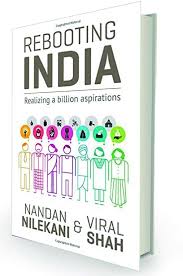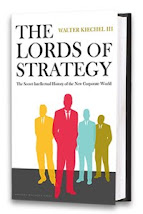Having thus established the need for the counsellor, the book then
proceeds to talk about various aspects of the small business that could gain
from the help of the external counsellor. The book is replete with examples
from diverse sectors and contexts on how one could have a positive intervention
as a counsellor and save the small enterprise from a suicidal ruin. While there
are several anecdotal “tips” for managing the small enterprise – how to plan
for capacities, how to analyse costs, find break evens and revitalize
enterprises that have gone down the tube, it is not clear as to who the target
of the book is. It looks like this is written as an easy guide for people who
want to undertake conuselling for small enterprises as a profession. This is
the contradiction of the book – if you are going to be an industrial
counsellor, you need to have in you much more than what the book can offer. If
the reader is not a counsellor, then the question is how would the book be
useful – say for instance to entrepreneurs, academics or researchers? The
answer is not clear.
The book covers a wide range of topics, relevant to the small industrial
sector. Most of these topics are operational in nature, and focus on how costs
could be cut. For instance it starts off with an example on how costs could be
saved by enhancing credit limits (p.22), and how further costs could be saved
by going in for consortium purchase of raw material. This tone of providing
“tips” for cost cutting and enhancing the business is sprinkled throughout the
book. Since the authors move from one sector of the industry to another –
largely focusing on jute, cotton yarn, rubber, coir most of the solutions –
though general in nature seem to be deeply rooted in the particular context in
which it is being discussed.
The chapter titled Essential Business Analysis and Management Tools
covers a range of topics ranging from break even analysis and leverages (p.88)
product mix decisions using cost data (p.93) make or buy decisions (p.95)
economic order quantity and inventory management aspects (p.100) and cash and
profitability management (p.102). Quite a range given that all these are
covered in one chapter of about sixteen pages. Each of the topics has elementary
examples and do not reflect the reality and complexity of the business. For
instance while discussing cash management; the authors say “A portion of the
profit should be saved and ploughed back into business as retained earnings…(p.102)”
thereby equating profits with cash. Unfortunately elementary literature
tells us that under the accrual concept these two could be at variance and
therefore one has to worry on how to manage cash. The paragraph goes further to
say that “All cash receipts and expenses should be regularly recorded so
that one may see the flow of money in the business everyday (p.102).” An
important tip, but of little use – what could be more useful is to ensure that
the pipeline is not clogged up. So the tip for ensuring a greater cash flow
immediately follows “offering a discount at the time of sale if one believes
that one could have a cash problem (p.102).” perhaps a bit too simplistic a
tool to tell the counsellor to tell the entrepreneur.
The book also talks about forming consortia and networks to overcome the
handicap of small size. Yes, the idea of a co-operative purchase is good as
long as one treats the other as a partner and a third party (a large
enterprise) as a competitor. But is it not true that small enterprises compete fiercely
amongst themselves usually in the same segment? What would be the enlightened
self-interest for small entrepreneurs to join the networks the incentive
systems and the entire game theory of consortia is ignored. The book assumes a
simplistic behaviour amongst the entrepreneurs – that they would co-operate
when required and also compete when possible.
The chapter on revitalization also has a series of tips on how to manage
cost of funds and achieve early break even at a low capacity. Though the authors
claim that the examples are picked up from real life data they fail to capture
the complexity of the situation in which the enterprises operate. It goes with
assumptions that if we cut prices, sales will expand; if we offer discounts,
cash would flow in and so on. In reality small enterprises operate in a much
more complex environment than this.
While the book has the insights of several sectors in which the small
enterprises are working, it fails to live up the expectations of being a useful
guide or a text. The style of writing is very chatty and therefore does not
give the impression that there is a thread of analysis behind the suggestions
given. Each paragraph has a suggestion and these tips range from cash
management to branding to staffing. The book is not held together with a
central or an overarching theme. It is a bit of a let down after a series of
interesting literature that has come out on small industries in the recent
past. Even the title of the book is a bit misleading as it talks about managing
the small industrial economy, while the detail of the book is on managing the
firm. One only wishes that the collective experience of the authors who are
otherwise well known in the field of small enterprise could have been put to
use more effectively. The book looks like a typical product of a typical small
enterprise in India – it tries to be all things to all people, where the
entrepreneur is playing the role of a juggler managing multiple fronts and
delivering a product where a tremendous amount of effort has gone in, but the
market fails to see the utility of the effort.


































































![Hyderabad: A Book [or two] and A Movie](http://3.bp.blogspot.com/_mxWA9ZVkKhQ/S0vnLAO90CI/AAAAAAAABYM/WgbSbAcAaEk/S214/luther1.0.jpg)







![Two Lives [and this is not about Vikram Seth]](http://1.bp.blogspot.com/_mxWA9ZVkKhQ/S0vjkyDYRvI/AAAAAAAABXM/mJGK-_gZiNg/S214/mansur.jpg)





No comments:
Post a Comment